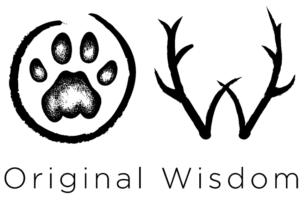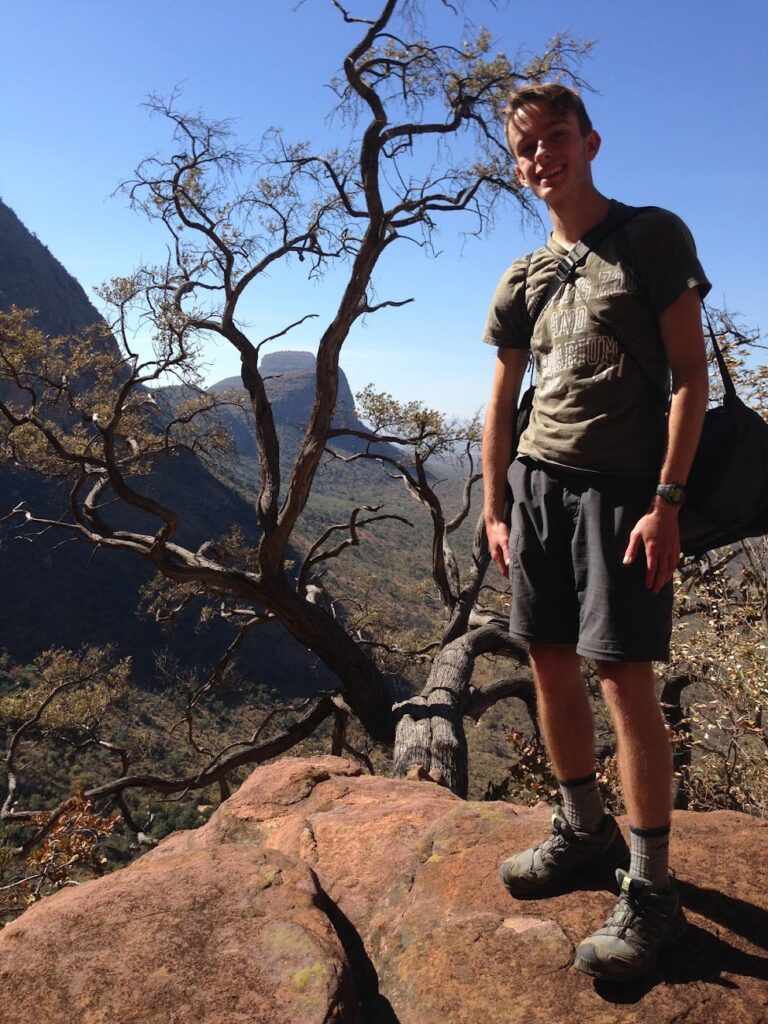We’ve moved to a monthly newsletter format for #TrackerTuesdays, so a new question will be posed every Tuesday, and answers will be published on the first Tuesday of every month.
Answer list: Spotted towhee from the Channel Islands in California; Namaqua rock mouse nest from the Republic of South Africa; zebra tracks from the Republic of South Africa; and green pigeon scat from the Republic of South Africa
The art and science of tracking develops creative and critical thinking skills, and curiosity and empathy, which also help us to better understand our place as caretakers of this beautiful world. The full expression of tracking includes more than just identifying tracks and signs. It also includes the interpretation of behaviours from tracks and signs, and the following and finding of animals (or people) using tracks and signs. Following and finding, or trailing, also builds confidence and leadership qualities in individuals, and teamwork among groups. Tracking requires us to really see the environment, and each other, and to reconnect to fundamental systems of living, which include knowledge of self, and connection to community (including non-human communities) and land. Tracking IS original wisdom. It’s both ancient, and new. Our ancestors tracked animals for food, clothing, shelter, and better quality of life. Today, we push the frontiers of tracking forward by including technology and new discoveries. One of the best things about tracking is that the “book of nature” is so vast that we can never know it all. It’s always exciting and always humbling.
Tuesday, June 9
Our question today was from Mike Watling in the Channel Islands off of California, USA.
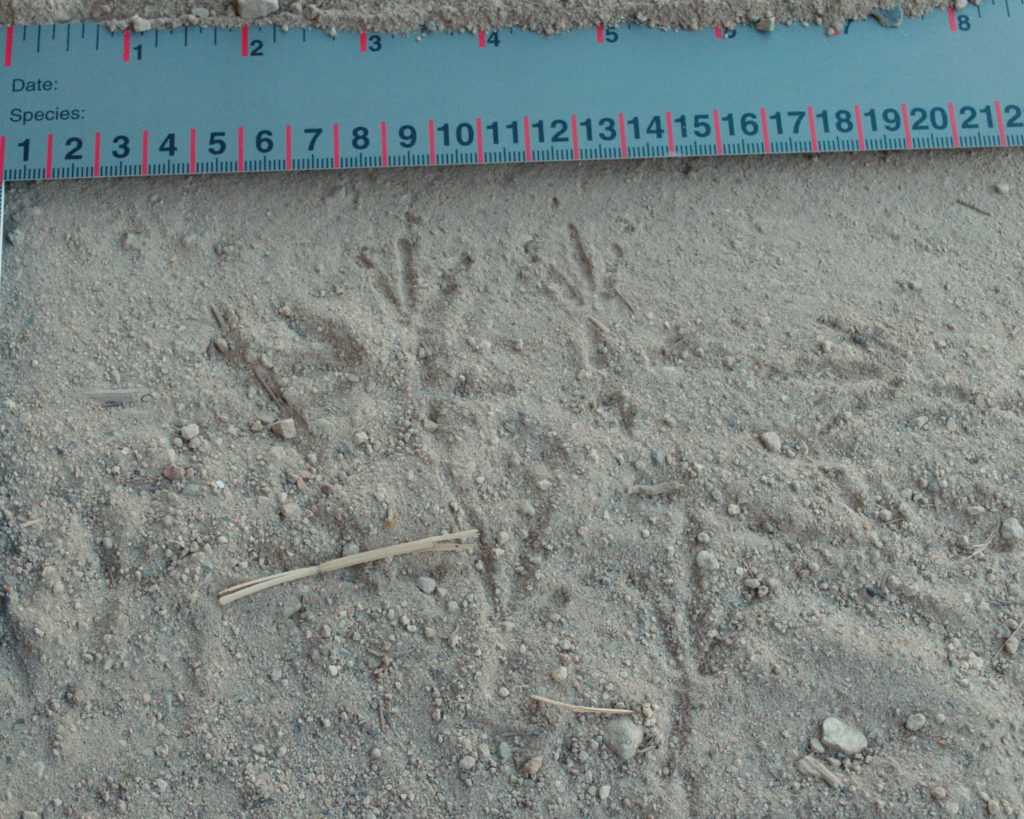
Spotted Towhee tracks from Mike Watling in the Channel Islands, California.
Mike Watling (foxtracker805) sent this photo from the Channel Islands National Park, where he volunteers as a naturalist. He says, “The bird track is a spotted towhee. They will hang out in the bushes near my campsite (on Santa Rosa Island) and are frequently on the ground under the picnic table. For the spotted towhee, and birds in general, size and category (classic, game bird, etc.) is where I start, followed by gait (walk, hop). The spotted towhee track is similar to other sparrows and can be easily confused with other towhees. Locally, we have the CA towhee and spotted towhee. The CA towhee is larger (“two for towhee” is how we remember it, meaning 2 inches in length) while the spotted towhee in the 1.5 to 1.75 in range. Also, spotted towhee tends to hop while the CA towhee walks. Birds are tough since they migrate. It’s like a constant lineup change as birds migrate in and out…. birds are my weakness.”
Bird tracks and signs are a weakness for most trackers, until they really dive in and start learning them. Mark Elbroch and Eleanor Marks have an excellent book on Bird tracks for North America, pictured below.
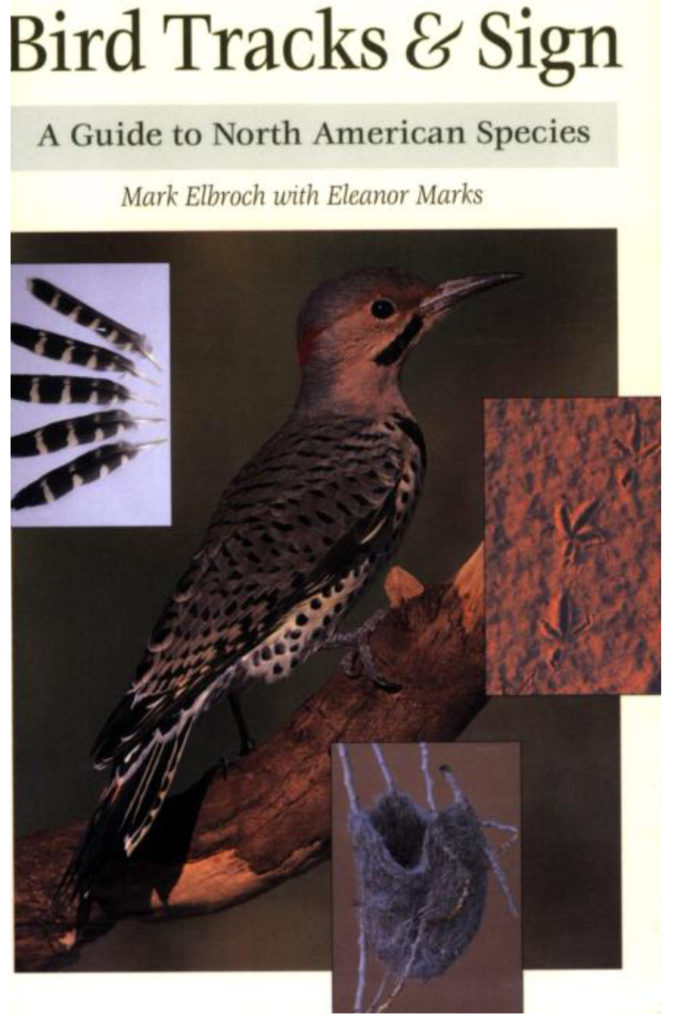
The front cover of Mark and Eleanor’s Bird T&S book.
To use the book, first you look at what kind of foot structure the bird has. Is it a classic bird track, like a child draws a picture with three toes forward and one toe straight back? Or, is it a game bird, with three long toes forward and a short toe (a dot or dash) pointing back at an angle? Or, is, it webbed (also called palmate) like a duck? Sometimes, you don’t see obvious webbing between the three forward toes in the track because of the substrate, but you can see the toes are pulled in, arcing towards each other, which indicates that they are being held by webbing. Then, totipalmate tracks have webbing between all four toes, which pulls them all together in a webbed “K” shape. There are only a few totipalmate birds, like pelicans and cormorants, to worry about. Finally, zygodactyl foot structure in birds is also four toes in a “K” shape, but without webbing. An example of this is an owl.
Once you determine the bird’s foot structure, you measure its track, and then flip to just inside the front cover for classic bird tracks, or just inside the back cover for the other types of bird tracks. Scan down the table of contents until you see the measurement you just recorded, in this case, the track measures between 1 5/8 and 1 7/8 inch (or 4.1 – 4.7 cm) for spotted towhee. There might be a few birds listed in that size range (green-tailed towhee, and Canyon towhee), so check them all by flipping to the pages listed and comparing your bird’s tracks to the information listed. Not all birds are in the book, either, but that gives us something to anticipate – the next volume! Then, as Mike, said, above, the behavior of the bird can be an important distinguishing feature – does it walk, or hop? Is it found near water, or in fields? Is it even in your range, remembering that birds migrate, too?
Tuesday, June 16
Our question today comes from South Africa, Who’s sign, and why?
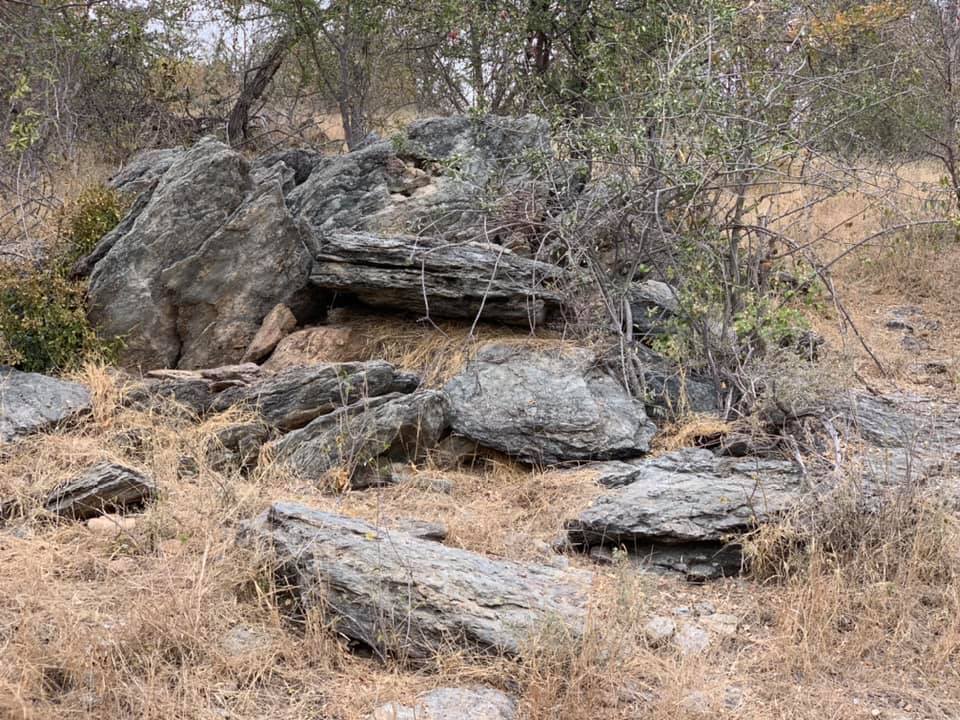
The nest of a colony of Namaqua rock mice, photo by Kersey Lawrence.
As the veld recovers from the many years of drought, we are seeing more and more of these, and they aren’t always in rocks. Sometimes, they are in hollows in dead (or still living) trees. We identify them by the long dead grasses that have been stuffed into the openings, presumably as insulation. Carmz Müller, who was recently on a program with us and saw several of these, gave the answer, “The Namaqua Rock Mouse – lives in small colonies and a characteristic of its communal shelters are the large accumulations of dry grass and other plant material dragged into the entrances.”
Tuesday, June 23
Who’s tracks, and why? From the Greater Kruger Area of Southern Africa.

Tracks of a zebra, photo by Kersey Lawrence.
Mammal tracks always seem to attract more interest, perhaps because that’s what we typically think about tracking, when we think about tracking…
We had three answers from three different countries for this one:
Ross Marcel Gariepy (SA) – Zebra, odd toed ungulate or hoofed animal.
Mike Watling (USA) – I’m going zebra (Burchell’s). The size is right at ~100mm long. I’m also cluing in on the opening or notch, at the posterior of the track, to the feature known as the “frog”. I would say the track next to the ruler is a hind as it appears narrower than the track above it. And to overplay my hand, I’ll say left hind of zebra.
Stuart Wedge (UK) – At first, I too thought Zebra but then saw the difference in shape between front and back feet. Looking closer the front foot is rounder and the rear is longer. The size is quite large too so I’m pretty certain it’s Buffalo.
These are zebra tracks, although they can, and often are mistaken for buffalo and other hoofed species. The key feature to differentiate them is the number of toes. There is only one, continuous toe at the top, or leading edge of these tracks. Buffalo, and all our other bovids, porcids, and antelope would show two toes. But, it’s not always easy to tell!
As Mike mentioned, the “frog” in the back of the track is also a good feature to look for, and it is present in equids, including donkeys and horses, which can be very easily confused with zebra tracks in areas where they overlap. The ruler is next to a longer hind foot, and the front foot is slightly rounder and larger. We often see this size difference in animals that walk on their toes, and attribute the bigger size in the front to the need to support the weight of the head and the neck of the animal.
Tuesday, June 30
Who’s scat, and why? From the Greater Kruger Area of Southern Africa.
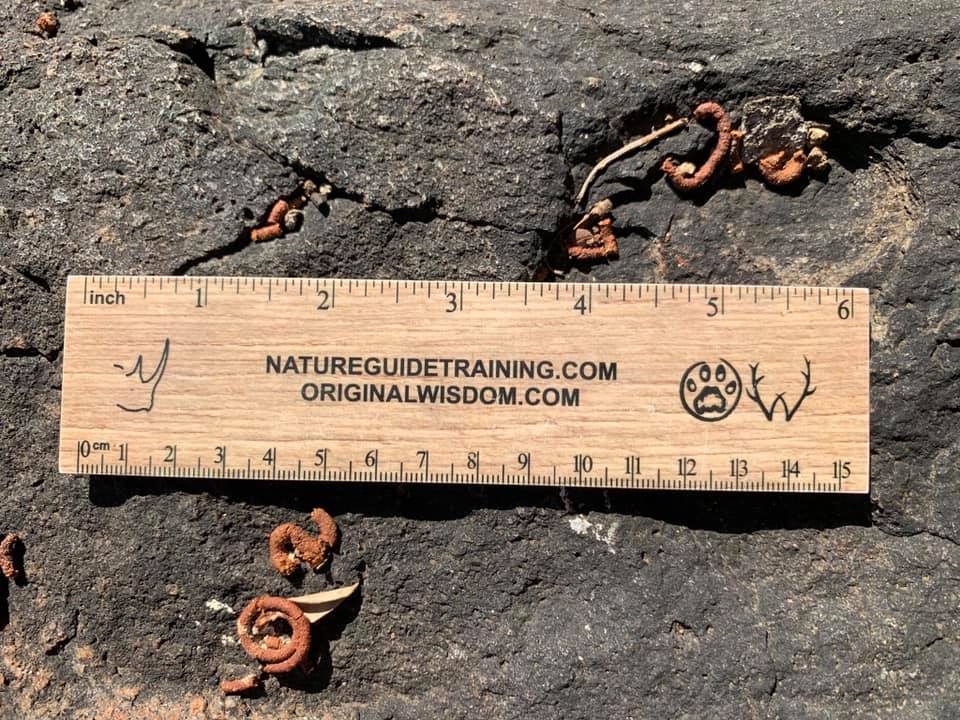
Green pigeon scat, photo by Kersey Lawrence.
Patrick Bernard Oreja explained this one, “Green pigeon? Fruit seed matter curling up the scat and colouring it. Can also see Uric acid.”
Pigeons and doves (family Columbidae), create spiraled little scats under roosts. Depending on what they are eating, they can appear as tight little coils resembling cinnamon buns, or Chelsea buns, complete with the whitewash of uric acid resembling the icing. Pigeon scats tend to be looser, as they eat a lot of fruit, and they are also often more colorful, and larger, as we see in the photo. You can also make out seeds from the fruits.
Thanks to everyone who participated. Let’s keep learning together! If you have photos (with an explanation that you’d like to contribute), please contact me at kersey@originalwisdom.com – your contributions will be credited to you.
#TrackerTuesdays, #trackingisoriginalwisdom, #natureguidetraining, #cybertracker, #trackercertification, #trackermentoring, #alwaystracking, #environmentaleducation, #ecologicalliteracy, #ecologicalintelligence #wildlifetracking, #animaltracking, #tracksandsigns, #systemsthinking, #ecology, #nature, #science, #conservation, #sustainability, #resilience, #adaptation #thinkinglikeamountain #weareallconnected #BeMoreNeedLess #trackinginafrica #greaterkruger #dailytrackingchallenge
Download our recommended reading list for trackers by signing up for our “News for Trackers” newsletter!
Our goal is NOT to be spammy with our newsletter. We’d just like to send occasional updates on upcoming programs and maybe some cool info on wildlife, people, and tracking!
Once the sign-up form has been submitted, you will be re-directed to the download page.
Download our recommended tracking book list (and some other resources). It’s specific to Southern Africa and North America, but, a good tracking book is helpful in any region as a starting point to learn how to look at track morphology and animal behavior.
[contact-form-7 id=”2892″ title=”Subscribe to the newsletter”]
